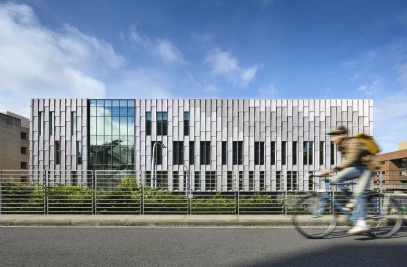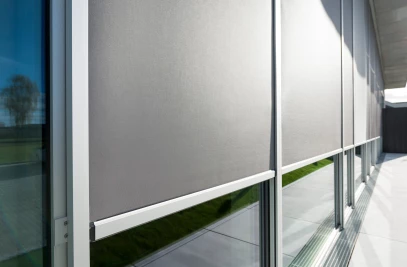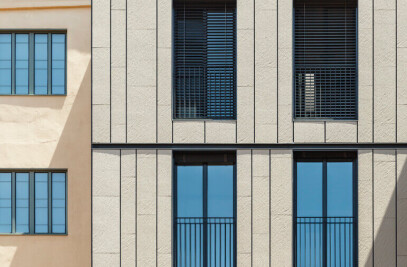Located nine kilometers southeast of the city’s historic center, the new U.S. Embassy in Guatemala City consists of an 18,800-square-meter chancery building and support buildings with a below-grade garage. Working in collaboration with the Department of State’s Bureau of Overseas Buildings Operations (OBO) and the design-build team at B.L. Harbert International (General Contractor) and Page (Architect of Record), The Miller Hull Partnership’s (Design Architect) design emphasizes the important diplomatic relationship between the United States and Guatemala and provides a first impression of the United States for many Guatemalans planning to visit the country.
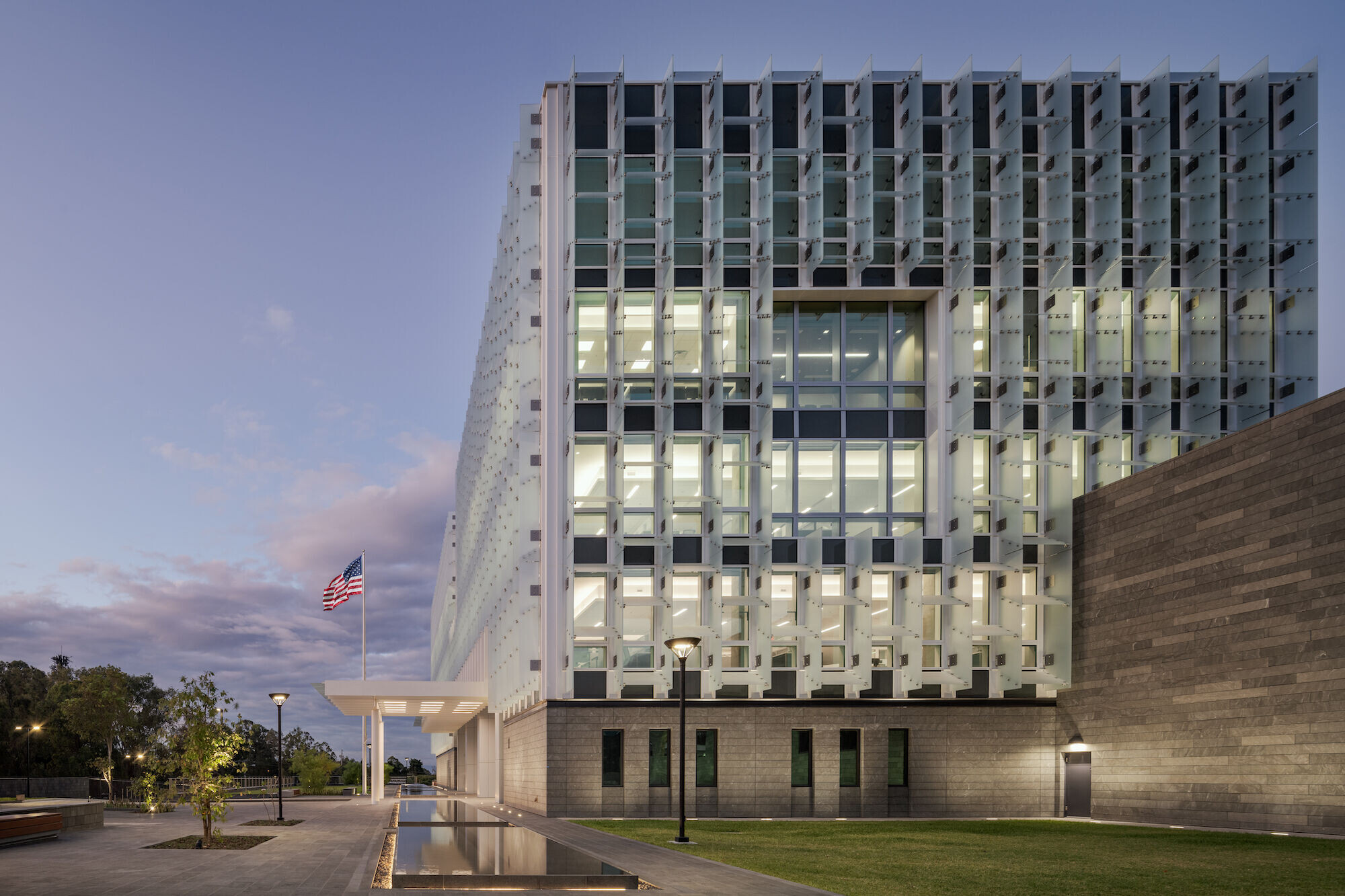
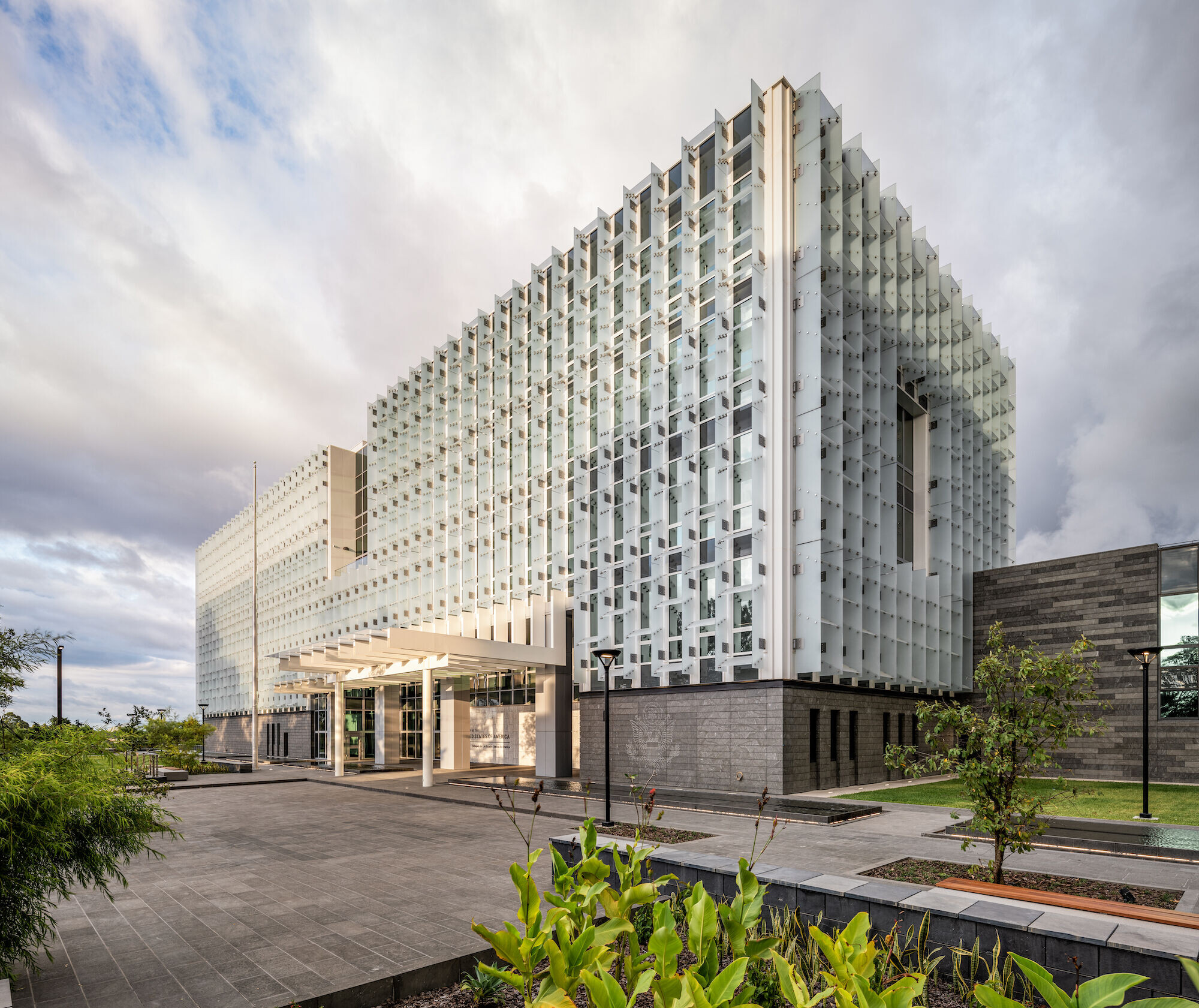


The Embassy is situated on a relatively small, steeply sloping lot, surrounded by a mountain valley and deep forested ravines. Using an innovative terracing method to stabilize the extreme topography and organize the site, the design team was able to integrate the campus program while providing generous outdoor gardens for both visitors and staff.
The office building emerges from the ground plane as two complementary bars—a stone base and a glass tower. The base reflects an earthbound quality through its materiality and relationship to the site while the tower is characterized by openness and transparency. The conceptual form is reflective of the two countries—the stone base is inspired by Maya architecture and transforms into a light and airy tower to symbolize the optimistic, diplomatic relationship between Guatemala and the United States. Communal programs surround a courtyard at the intersection of the tower and base, which forms the heart of the building. A generous plaza and consular garden are shaded and protected by canopies, providing a hospitable waiting area for a large volume of consular visitors.

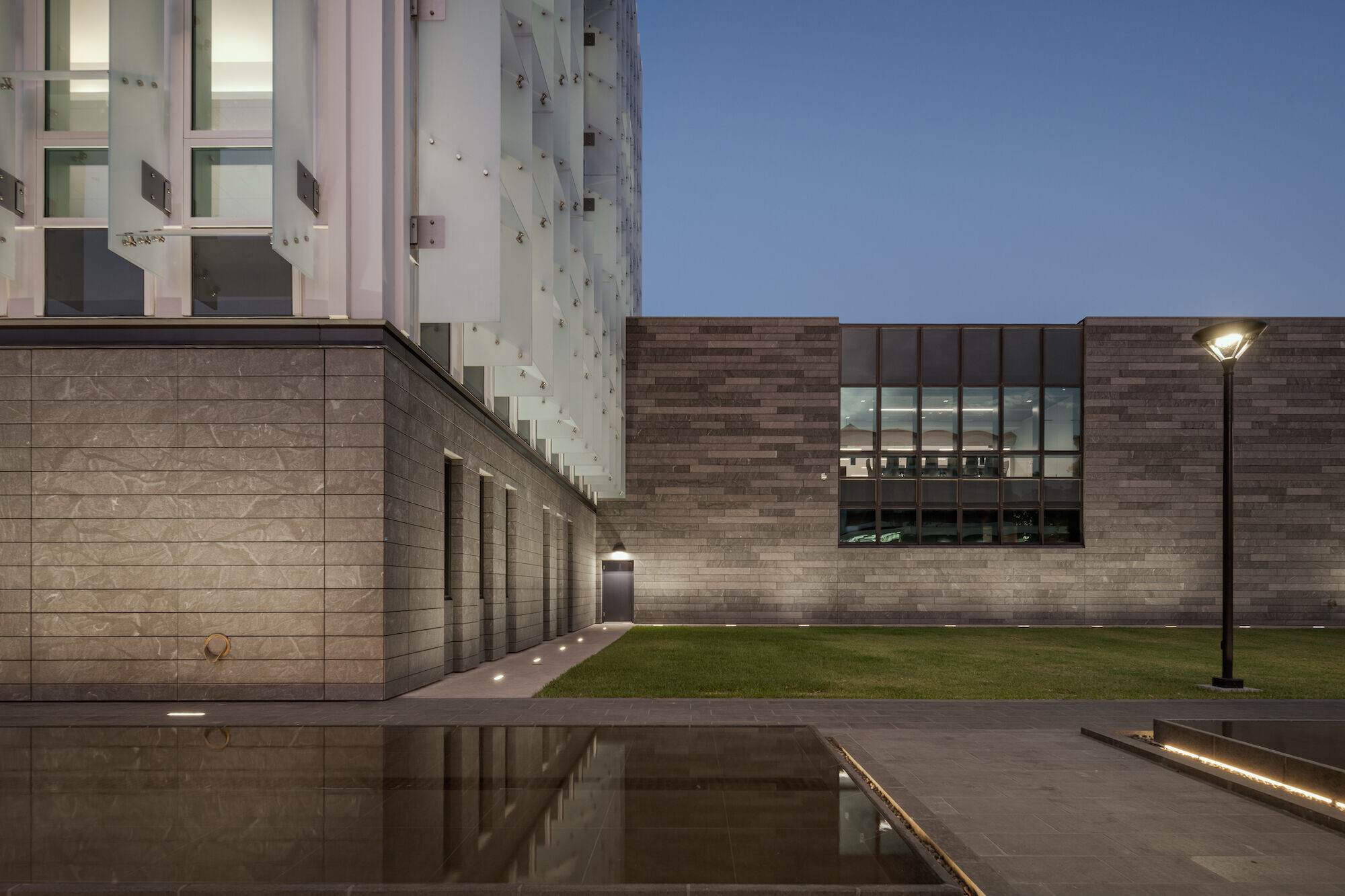
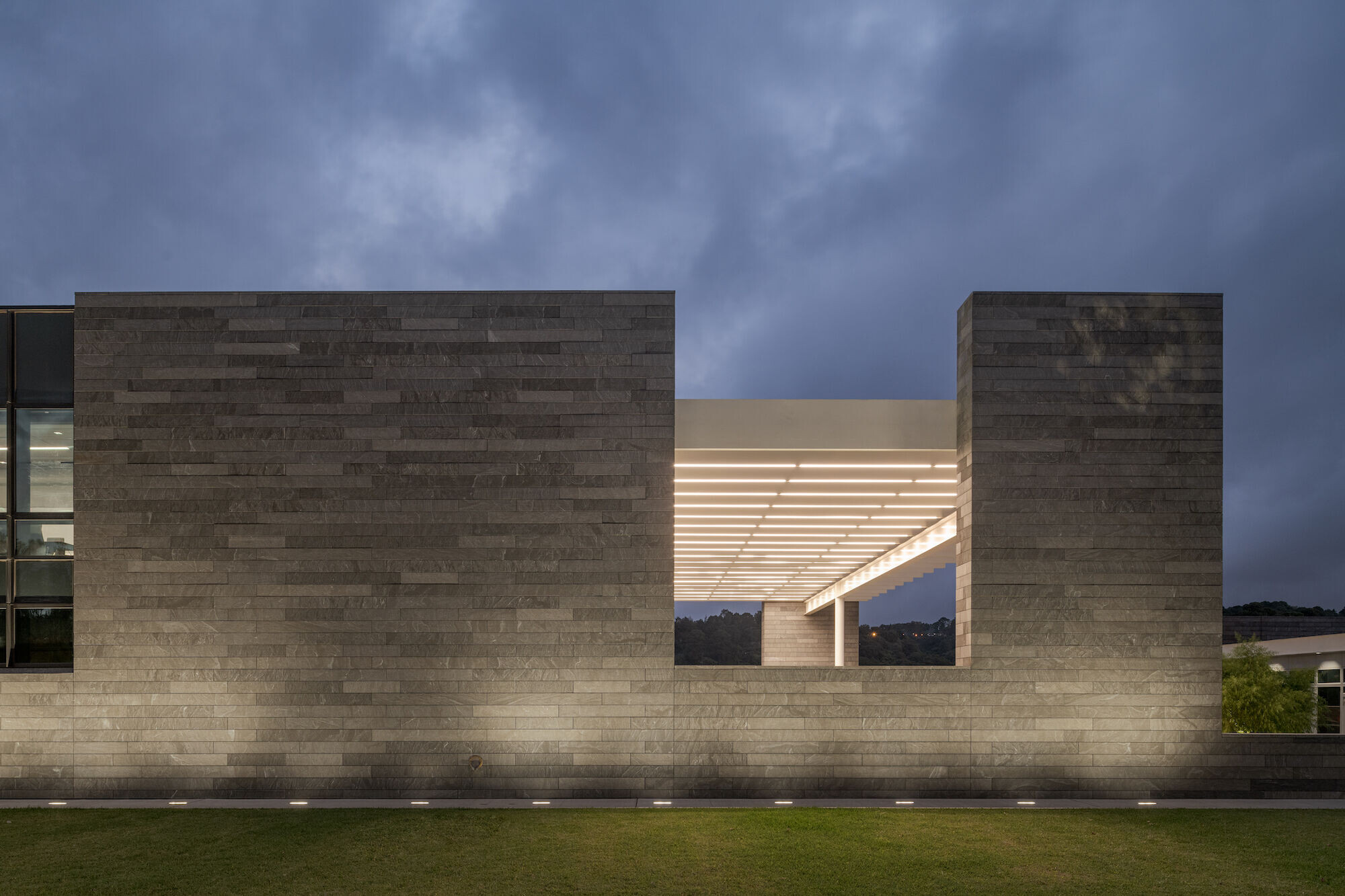
The new Embassy is located next to several significant green spaces including the Parque Ecologico Jacarandas de Cayala and Parque Ecologico y Deportivo Cayala. The design creates significant areas of forest and native vegetation that link to these spaces, providing water recharge, protection against natural disasters, and shelter for biodiversity.
Targeted to exceed the Federal Performance Goals for energy efficiency and renewable energy, the Embassy reduces energy consumption by 26.5% over a comparable new building and provides 9% of the new office building’s energy consumption with solar photovoltaics. The Embassy is designed to reduce offsite flows by treating and reusing wastewater onsite, all irrigation water is supplied by this reclaimed resource. Additionally, the Embassy will match existing pre-development stormwater runoff flows using detention tanks which slow the release of water, mitigating risk to water quality and adjacent slope stability.



The new Embassy is part of Miller Hull’s EMission Zero initiative—a program announced in 2021 that combines the firm’s actions to eliminate emissions in the built environment through Design, ongoing efforts to Educate and Advocate, and a commitment to Offset the greenhouse gas emissions released up to the point of occupancy for all built projects.
Using the life cycle analysis tool Tally, upfront embodied carbon emissions are calculated to determine the amount of carbon offsets to voluntarily purchase for each project upon completion. Offsets voluntarily purchased by Miller Hull in 2022 totaled 24,264 tCO2e (metric tons of carbon dioxide equivalent) for twelve projects ranging in scale, location, and typology. The total upfront embodied carbon impact of the new U.S. Embassy Guatemala City’s structure, enclosure, and interiors was calculated at 41,524 tCO2e. Miller Hull’s voluntarily purchased offset contribution is 13,841 tCO2e—that impact is equivalent to the impact of driving an average passenger vehicle between Miller Hull studios in Seattle and San Diego nearly 28,000 times—with the offsets funding projects that utilize blowing agents for spray foam insulation that have a 99% lower global warming potential than typical hydrofluorocarbons (HFCs) spray foam.
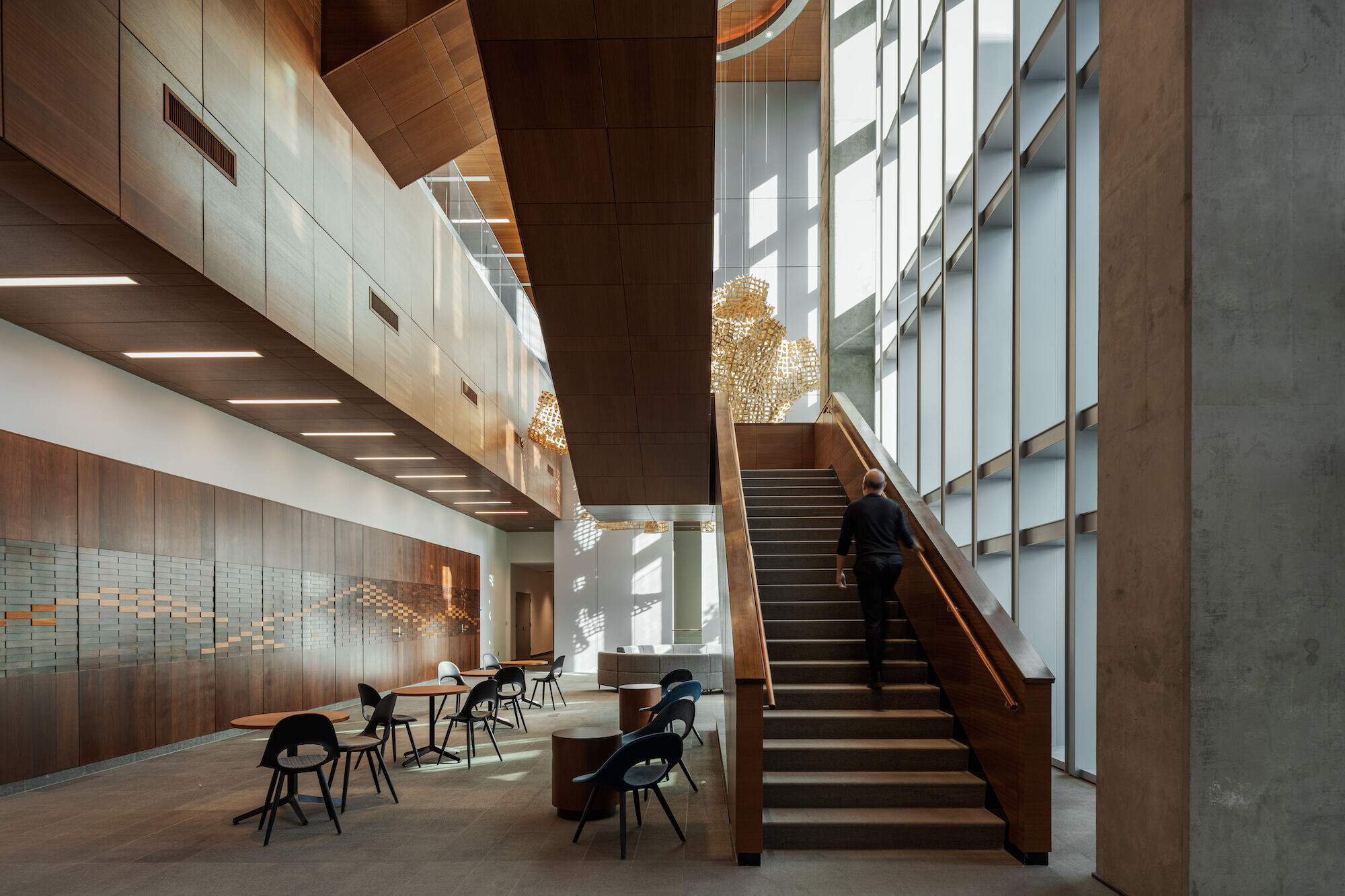
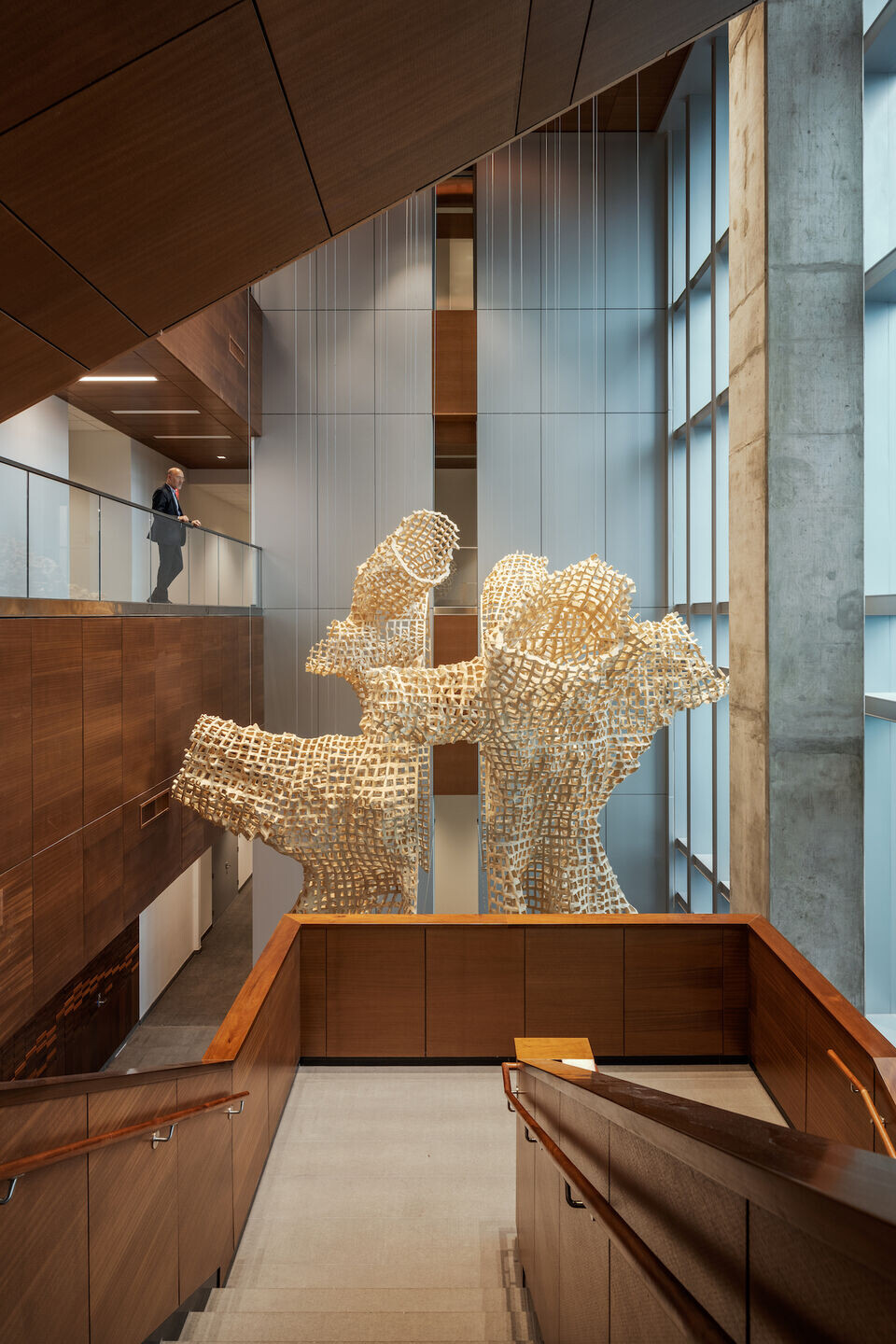


As part of EMission Zero, Miller Hull completes a life cycle analysis of each project to study the impact associated with the buildings they design. Miller Hull presented their research on the new U.S. Embassy Guatemala City to OBO to educate on alternative construction methods and provide design recommendations for future projects.


























